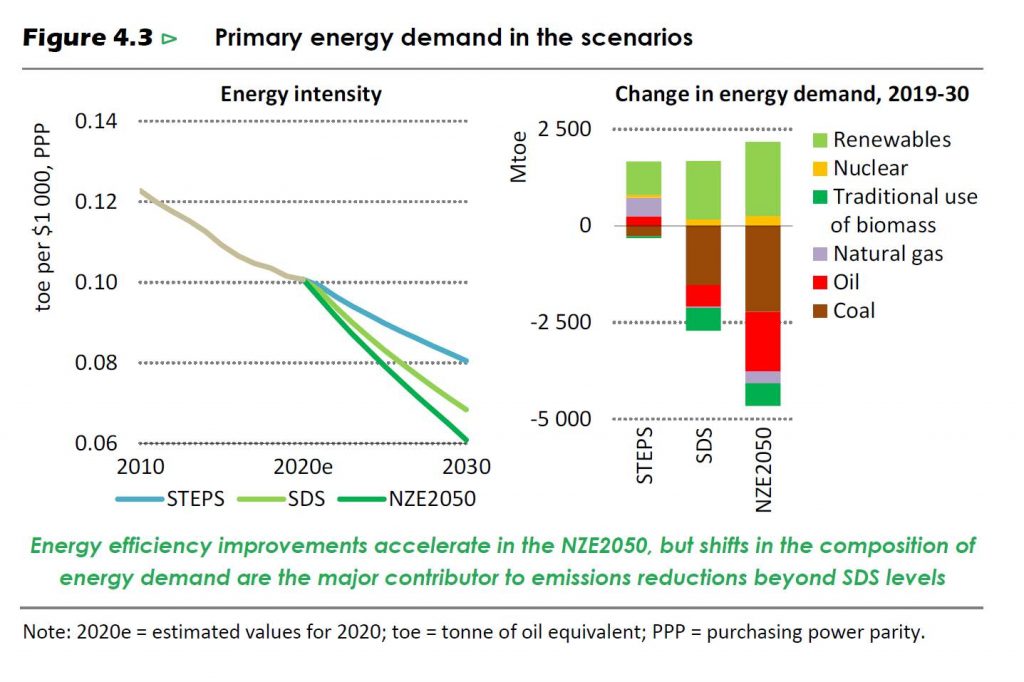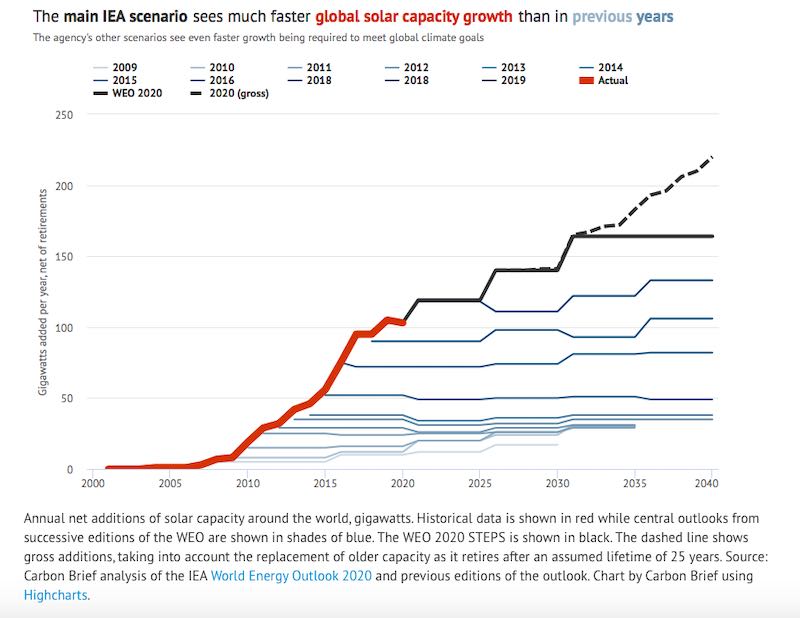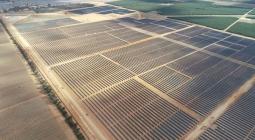Solar power is now “cheapest electricity in history”, says IEA.

The International Energy Agency has often been mocked for its poor assessment of the potential of solar power, both in terms of deployment and cost reductions, and it is still is. But now, even the IEA has conceded that solar power is low cost, in fact it is now “the cheapest electricity in history.”
This extraordinary admission was included in the 2020 version of its annual reference tome, the World Energy Outlook – a must read for energy wonks and the energy industry, even if its interpretation of industry trends, and its promotion of “business as usual” over climate targets frustrates many.
The WEO2020 includes, for the first time, a scenario that is broadly consistent with what might be needed to try and cap average global warming to a maximum 1.5°C, rather than the second prize of 2.0°C previously modelled under its Sustainable Development Scenarios.
This requires reaching net zero emissions by 2050, rather than 2070, and includes significant emissions reductions over the next decade, driven mostly by a vast increase in wind and solar production, a shift to electric vehicles, and “behavioural changes” that could reduce demand.
The IEA appears ready to embrace this because it has discovered that solar is much cheaper than it thought – in fact, up to 50 per cent cheaper than its estimates of just two years ago, in WEO2018. And it’s not the market that’s changed, so much as IEA’s interpretation of the facts.

The key to the IEA’s re-assessment is the cost of capital of wind and solar, which it now admits is as low as 2.6 per cent in Europe and the US, and far below its previously assumed range of 7-8 per cent.
That means that solar can now be produced “at or below” $US20 a megawatt hour, as has been delivered in auctions in Portugal ($US13/MWh) and the Middle East. It is now so cheap that the IEA says: “For projects with low-cost financing that tap high-quality resources, solar PV is now the cheapest source of electricity in history.”
Even on the IEA’s modified “value adjusted levellised cost of electricity” (VALCOE), which includes the simulated value of three system services: energy, flexibility and capacity, solar still beats coal and gas in all continents, and is beaten only by onshore wind in Europe.

Renewables, and particularly solar, form a large part of the changes required to meet whatever scenario that the IEA is contemplating, although the graph above shows a more modest additions, and barely any capacity removal in its central stated policies (STEPS) scenario.
With that STEPS in mind, it is interesting to note that the IEA has upgraded its forecast for electricity generation from non-hydro renewables in 2040, which is now eight per cent higher than expected last year and 22 per cent above its estimates of 2018, according to Carbon Brief, with solar expected to produce 43 per cent more, even in the central scenario.
Researchers at Carbon Brief have also is now seen reaching 12,872 terawatt hours (TWh) in the STEPS, up from 2,873TWh today. This is some 8% higher than expected last year and 22% above the level expected in 2018’s outlook, with solar – dubbed by the IEA as the new “king of electricity” is expected to produce 43 per cent more, even in the central scenario.
“This means they overtake coal as the world’s largest source of power by 2025, outpacing the “accelerated case” set out by the agency just a year ago,” Carbon Brief notes.
That translates into record-breaking additions of new solar capacity in every year from 2020, and contrasts with the IEA’s previous assumptions that solar additions would flatline into the future.
And to reinforce IEA’s history of misreading solar, Carbon Brief have produced this graph below, which tallies its predictions over the last 11 years, since WEO 2009, and what actually transpired (the thick red line).

The forecasts made for solar over the last decade look ridiculous, and always assume a flatline. The total capacity of installed solar is now higher than the 2040 forecasts for any year including 2018. And remember, the forecasts in black are for the central scenarios. The need for the sustainable development and NZE2050 scenarios, which are not published, would be significantly higher.
It is that heroic effort to pretend that solar, and wind for that matter, are not an economic threat, which has assisted the fossil fuel industry’s efforts to pull the wool over the eyes of both investors and governments, and has have left some countries, including Australia, scrambling to prepare their grids for what many analysts have been insisting for many years is inevitable.
14 October 2020
RENEW ECONOMY





